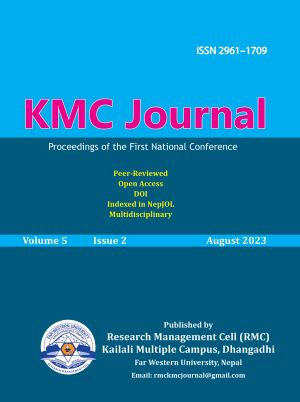Strategic Imperatives of Sustainable Marketing of Religious Tourism in Nepal
DOI:
https://doi.org/10.3126/kmcj.v5i2.58236Keywords:
Sustainable marketing, economic sustainability, social sustainability, environmental sustainability, religious tourism marketingAbstract
The growth of tourism industry presents both opportunities and challenges and requires effective marketing strategies to promote sustainable development. In this context, the study examines the current state and identifies sustainable marketing strategies for religious tourism in Nepal. The study is based on a qualitative research design and utilizes self-administered open-ended questions to collect data. It employs snowball sampling to select samples from two distinct groups: tourism professionals and entrepreneurs, who are acknowledged for their remarkable abilities and expertise in the field and have achieved high levels of professional recognition at the national level. The analysis involves identifying key themes related to the data and relevant literature using a thematic analytical approach. The study is limited due to the small sample size. Results of the study indicate that a balanced approach, which integrates economic, social, and environmental marketing initiatives, is crucial for the sustainable development of Nepal’s religious tourism industry. The study emphasizes the interdependent nature of these initiatives and their significant impact on the industry’s long-term viability. The study provides insights into the key marketing strategies and best practices of religious tourism for governments, tourism boards, entrepreneurs and stakeholders to drive long-term success and growth in Nepal.
Downloads
Downloads
Published
How to Cite
Issue
Section
License

This work is licensed under a Creative Commons Attribution-NonCommercial 4.0 International License.
This license allows reusers to distribute, remix, adapt, and build upon the material in any medium or format for noncommercial purposes only, and only so long as attribution is given to the creator.




